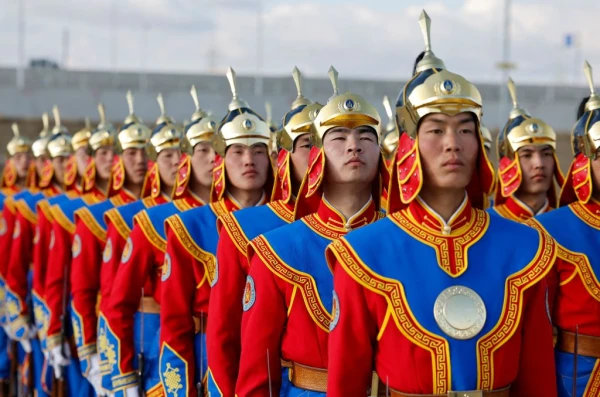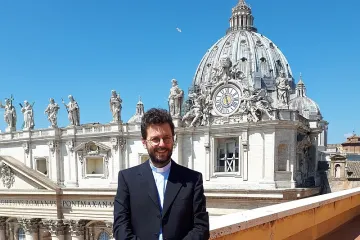Vatican City, Aug 27, 2023 / 08:00 am
Pope Francis’ next international trip will bring him to Mongolia, a democracy sandwiched between the authoritarian powers of Russia and China.
When Pope Francis lands in the capital city of Ulaanbaatar on Sept. 1, he will become the first pope in the history of the Catholic Church to visit Mongolia, but the trip could have geopolitical implications beyond the country’s small population of just 1,450 Catholics.
Mongolia is a post-Soviet democracy that continues to have strong ties with its geographic neighbors China and Russia as well as an important diplomatic relationship with the United States, which Mongolia calls its “third neighbor.”
In Pope Francis’ first speech at Mongolia’s State Palace, the pope will address not only Mongolia’s democratic leaders but also the local diplomatic corps, which includes embassy officials from Russia, China, and North Korea. This speech in particular presents an opportunity for the pope to send a message to Moscow and Beijing.

Russia
Russian state media has already signaled that it is paying close attention to the pope’s trip. The Kremlin-owned Tass news outlet even suggested the possibility of a papal plane layover in the Moscow airport as a “neutral” location for Pope Francis to meet Russian Orthodox Patriarch Kirill.
During Mongolia’s era of one-party Communist rule in the 20th century, its political and economic ties with the Soviet Union were very strong, and Russia continues to be an essential energy supplier for the Asian country.
The Soviets gave Mongolia’s capital its current name, Ulaanbaatar, meaning “Red Hero” in Russian, in 1924 in honor of communism. The Mongolian language has used a Cyrillic-based alphabet similar to Russian since the 1940s, although the government has announced plans to revert to the country’s traditional vertical script by 2025.
Today Mongolia imports 90% of its oil products from Russia and has abstained from U.N. votes that condemned the Russian invasion of Ukraine.
The war in Ukraine has come up in many of the pope’s speeches during his international trips in the past year, including in a speech to government leaders in post-Soviet Kazakhstan, where the pope called for an end to the “senseless and tragic war” in Ukraine.
Due to its unique role as a Eurasian democracy, Mongolia has been put forward as a site for potential peace negotiations between Ukraine and Russia. Pope Francis’ travel to Mongolia comes amid a Vatican peace mission led by Cardinal Matteo Zuppi, who has made diplomatic visits to Kyiv, Moscow, and Washington, and was also asked by the pope to continue the Vatican’s “peace offensive” in Beijing.
China
Mongolia shares a nearly 3,000-mile border with China, which is also Mongolia’s most significant economic partner. Historically, the Mongols conquered all of China during the 13th century and later Mongolia was a part of China’s Qing dynasty for more than two centuries, so one could argue that this is the closest the Catholic Church has ever come to a papal trip to China.
Chinese Cardinal-elect Stephen Chow of Hong Kong has said that he will travel to Mongolia for the pope’s trip with a delegation of about 30 Hong Kong Catholics. Earlier this year, Chow became the first Hong Kong bishop to make an official visit to Beijing in nearly 30 years.
While Pope Francis is in Mongolia, the Chinese Communist Party will implement new religious restrictions, titled “Regulations on the Management of Religious Activity Sites,” which come into force on Sept. 1. The restrictions ban the display of religious symbols outdoors, require preaching to “reflect core socialist values” and limit all religious activities to government-approved religious venues, according to China Aid.
(Story continues below)
The Chinese religious freedom restrictions will affect Christians and Buddhists alike, including in the regions of Tibet and Inner Mongolia, which could be a potential talking point for the Buddhist-Catholic interreligious dimension of Pope Francis’ Mongolia trip. The pope, who has previously received a delegation of Mongolian Buddhist leaders at the Vatican, is scheduled to take part in an interreligious meeting in Ulaanbaatar on Sept. 3.
Vatican-China relations have had a rocky year. Last month, the Vatican announced Pope Francis’ decision to approve the appointment of the bishop of Shanghai who was previously installed by Chinese authorities without the Holy See’s approval. It was the second unauthorized appointment by Beijing since November 2022.
China currently dominates Mongolia’s trade, with Mongolia sending 86% of its exports to China. Coal accounts for the majority of China’s imports from Mongolia. During the Mongolian prime minister’s six-day trip to China this summer, the prime minister spoke about taking China-Mongolian relations “to new heights” and signed a contract for the construction of a $1.8 billion railway connection to further expand trade and economic cooperation between the two countries, a boost to China’s future Mongolian coal imports.
Notably, Mongolia also agreed to deepen cooperation to mine rare earth metals with its “third neighbor,” the United States, during an official state visit by the prime minister to Washington earlier this month. The U.S. also signed an “Open Skies” agreement with Mongolia, paving the way for Mongolian Airlines to fly to the United States for the first time.
Pope Francis is set to travel to outer Mongolia over the upcoming Labor Day weekend. During the four-day trip, the pope is scheduled to meet with government leaders, engage in interreligious dialogue, and offer Mass for the country’s small Catholic population.






